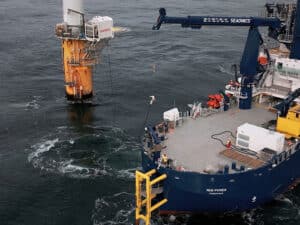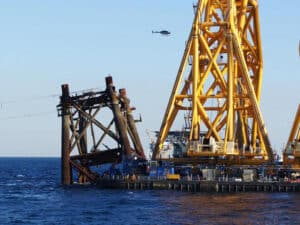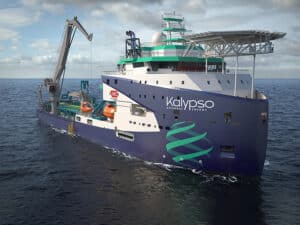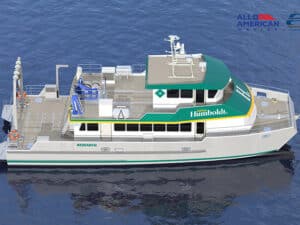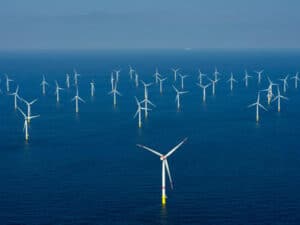
Op-Ed: How OSV shortages are driving digitalization
Written by
Damien Bertin, Business Director, Opsealog, on vessel shortages and OSVs.
By Damien Bertin, Business Director, Opsealog
Amid the escalating demand, the industry faces offshore support vessel (OSV) shortages, many of which were scrapped or withdrawn from the market during the pandemic. The resurgence of the offshore market has seen an increase in the utilization of digital solutions for the reassessment of fleet composition and upgrades.
A myriad of factors is driving the OSV sector towards heightened fuel and operational efficiency. Notably, major oil-producing nations in the Middle East and other regions are planning to significantly increase production, resulting in a surge in demand for OSVs. This scarcity has led to substantial hikes in day rates, compounded by elevated fuel prices, posing challenges and opportunities for both shipowners and charterers, with far-reaching implications. The domino effect extends to various assets, including drilling rigs, subsea construction boats, and OSVs.
Balancing fuel efficiency and fleet utilization
Following several years of low costs, charterers are experiencing a substantial rise in costs, driven by soaring fuel prices and daily rates. This is a powerful incentive to improve operational efficiency and cut costs in a swiftly evolving market. In response, the adoption of digital systems that facilitate operational monitoring is increasing. The immediate goal is to enhance fuel efficiency, while in the long term, these systems help in identifying the optimal vessels and fleet size to meet evolving requirements.
For vessel owners, the combination of vessel shortages and attractive rates is incentivizing them to maximize vessel availability and capitalize on these favorable conditions. This also increases the need to manage operational costs and reduce risks, notably in the usage of critical elements such as the vessel’s engine.
A maturing narrative around digital solutions
That said, current high interest rates present another challenge, making financing more difficult and newbuild orders less attractive. While fuel efficiency remains a central consideration for investment, ongoing uncertainty around new fuels, new technologies, and regulations steers much of the industry toward extending the life of assets rather than adding new vessels to fleets.
As a result, the past few months have seen a significant evolution in the industry discourse around the significance of digitalization in enhancing operational efficiency. The industry’s interest and the viability of investments, whether in new assets, technologies, or digital systems, remains closely tied to market conditions, influencing the ongoing development and adoption of digital solutions.
The conversation has matured, with companies across the sector now acknowledging the practicality of embracing digital technologies, while understanding that no single solution can address all existing challenges. Leading charterers and shipowners in the OSV sector are now building their “digital ecosystems,” integrating data analysis software with hardware providers, logistics software, and more.
The advantages are clear: companies can effectively monitor fuel usage, enhance energy efficiency, and assess engine performance through fuel monitoring and analytics. For fleet managers, detailed monitoring offers valuable insights to optimize operations, reduce their carbon footprint, and manage operational costs.
Looking ahead, having a robust digital foundation will increasingly serve as a competitive differentiator for companies, helping lower GHG emissions and prolong vessel lifetimes.
Incoming regulatory requirements
As environmental regulation is gradually tightened, data will play a crucial role in unlocking operational efficiencies to reduce fuel consumption and greenhouse gas emissions. In addition to market challenges, there is mounting regulatory pressure for decarbonization. Though not currently required to comply with EU ETS regulations, OSV operators are anticipated to do so in the future, as indicated by the European Council. The emissions trading scheme is set to include offshore ships above 5000 gross tonnage (GT) from 2027, while the EU MRV will extend from 2025 to cover offshore ships above 400 GT. By 2026, the European Commission will review whether general cargo and offshore ships between 400 and 5000 GT should also be included in the ETS. Beyond the shipping industry, energy majors and their shareholders are keen on reducing upstream emissions, with the public keeping a watchful eye on their progress.
Establishing data standards for e-reporting, especially under regulations like EU MRV and IMO’s CII, will become a pivotal step in facilitating the wider adoption of digital systems in the offshore sector. Industry-led initiatives by organizations such as the International Support Vessel Owners Association (ISOA), the Smart Maritime Network, and Energy LEAP indicate meaningful strides toward making digital reporting a reality. However, the formal approval of these standards by regulators such as the IMO and the European Maritime Safety Agency (EMSA) is crucial to enable the transition from traditional paper and spreadsheet reporting to fully digitized processes.
Progressing the conversation
Although digitalization has made notable advancements within the OSV sector, obstacles remain, leaving numerous owners and charterers hesitant to fully embrace it. The vast array of digital systems available compels shipowners to pursue a more defined understanding of the return on investment (ROI) and the synergies between these solutions.
Consequently, it is crucial that suppliers demonstrate the practical business rationale for digitalization as an easily attainable option that doesn’t necessitate substantial CAPEX investment, yet can strengthen their resilience in the face of uncertain markets.

